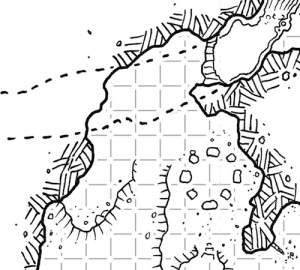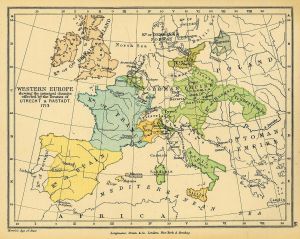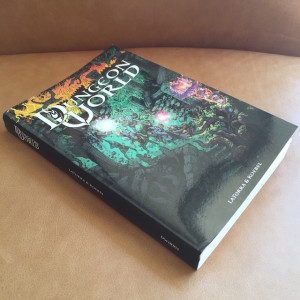 I finally got a chance to play Dungeon World on its own terms (as opposed to just reading and borrowing ideas for D&D). Other than myself and the GM, there were three other players, none of which had ever played a tabletop RPG before (but were familiar with the general idea and had experience with computer RPGs).
I finally got a chance to play Dungeon World on its own terms (as opposed to just reading and borrowing ideas for D&D). Other than myself and the GM, there were three other players, none of which had ever played a tabletop RPG before (but were familiar with the general idea and had experience with computer RPGs).
In addition to general play impressions, I was also particularly interested in seeing how long and complicated the character creation process would be. My previous experiences with powered by the apocalypse games have been Apocalypse World itself (a whole session, rather complicated) and Undying (a whole session, rather complicated). Since this game was explicitly pitched as a one-shot (or maybe a two-shot), clearly character creation would have to be less extensive, so I was curious if an AW lineage game could also do a more expedited intro naturally.
We had four PCs: druid, bard, paladin, and thief (that was me). As far as I know, the setting was mostly undetermined beforehand, with the exception of a few leading questions used for creating bonds and setting the stage. The main such question was a quest hook, something along the lines of: why does your character want to destroy the Chimaera-Hydra? The Paladin’s answer was that the Chimaera-Hydra had been gathering powerful holy books from many religions which were the key to some dark ritual. My (thief) answer was that the Chimaera-Hydra guarded a fabulous treasure which would allow me to get back my lover who had been tempted away by a rich man. There were lots of other leading questions that I forget right now, but it actually did not take very long. I think it was about 30 minutes.
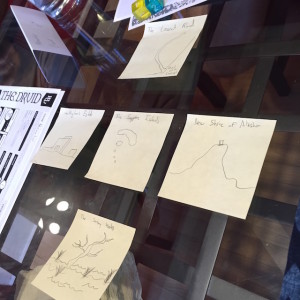 In addition to this collaborative world-building, we dynamically created the beginnings of a world map using post-its based on the setting questions. I think the GM had previously decided that the Chimaera-Hydra lair was in swampy woods (though that might also have been a result of a question that I am forgetting). The starting area was a trade route in the desert called the Crescent Road. To the south was the Sapphire Isles, which was the home of the druid PC and his order. I had stolen maps and other secrets from the druidic order to gain info about the Chimaera-Hydra, which the bard knew about but had not revealed to the druid PC. The paladin had been consulting with the druids about the theft of holy books when the thief was on the isles and at one point protected the thief (probably before meeting the druid PC, though I forget exactly how that went). The level of background ended up being just about perfect, and pretty much all the details were used in play, though I do not think we ever remembered to roll+bond.
In addition to this collaborative world-building, we dynamically created the beginnings of a world map using post-its based on the setting questions. I think the GM had previously decided that the Chimaera-Hydra lair was in swampy woods (though that might also have been a result of a question that I am forgetting). The starting area was a trade route in the desert called the Crescent Road. To the south was the Sapphire Isles, which was the home of the druid PC and his order. I had stolen maps and other secrets from the druidic order to gain info about the Chimaera-Hydra, which the bard knew about but had not revealed to the druid PC. The paladin had been consulting with the druids about the theft of holy books when the thief was on the isles and at one point protected the thief (probably before meeting the druid PC, though I forget exactly how that went). The level of background ended up being just about perfect, and pretty much all the details were used in play, though I do not think we ever remembered to roll+bond.
The inhabitants of the Crescent Road were wolf-people and worshiped a wolf-god that was controlled by the druids from the isles. The thief was wanted by the druids so the fiction began in media res as we were trying to enter a city on the trade route. We eluded the guards, fled into the city, and lost ourselves in the crowd, though not before distracting the guards with a dramatic display of druid shape-changing. From there we needed to decide how to reach the swamp of the Chimaera-Hydra, which was south beyond the sea. The three obvious potential routes were to the southeast past a ruined temple of the paladin’s order (which I think was destroyed by the Chimaera-Hydra), south over the sea through the Crescent Isles (where the druidic order ruled), or southwest over the rich man’s estate. The rich man’s illegitimate son was a stableboy who died in mysterious circumstances and also happened to have been the bard’s past lover. (It turns out that if you put five gay guys around an RPG table and share narrative control, 90+ percent of the NPCs turn out to be gay guys.)
Clearly I was not interested in dealing with the druids again. We settled on going southwest through the estate, though not without the help of the thief loading the dice that we rolled to decide the direction after voting yielded an even split between southwest and southeast. The rich man turned out to be a wizard, his estate a flying castle, and his stables were filled with pegasi. My elf lover had somehow been brainwashed or something and once the wizard figured out who we were he attempted to snare us and summoned a fire medusa to kill us while we were trapped in the castle’s great hall.
The combat was smooth (though starting with such high HP always feels a bit strange to me since my reference level has become OD&D’s 1d6). Some highlights include the paladin trying to force the medusa’s gaze away by physically wrestling it and accidentally partially petrifying the bard, the druid rallying the dogs in the great hall as a pack, and the elf lover being totally turned to stone. After defeating the medusa and wizard we had to carry the statue with us since we did not trust him enough to de-petrify him immediately. As a side note, the polyhedral damage dice seem unnecessary (1d6+STR would sufficiently advantage martial classes). The extra game pieces introduce complexity that will likely only be appreciated by someone that takes pleasure from D&D allusions.
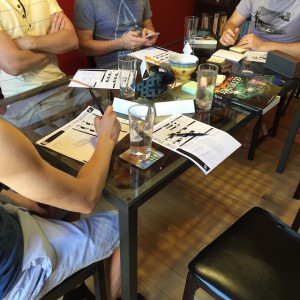 After the combat, the castle began to lurch sideways and lose buoyancy. (Apparently castles need live wizards to fly. Who knew?) So then we needed to decide whether we wanted to flee and save ourselves (leaving all the castle inhabitants to fend for themselves) or try to fix it. Lore Spouting by the bard (who had informal magical knowledge) revealed that there was probably some sort of magical device at top of the central tower. So we split up with the bard going after that and the rest of us heading to the stables for some pegasi to use as getaway cars. If we couldn’t fix the castle, we figured we could still fly away.
After the combat, the castle began to lurch sideways and lose buoyancy. (Apparently castles need live wizards to fly. Who knew?) So then we needed to decide whether we wanted to flee and save ourselves (leaving all the castle inhabitants to fend for themselves) or try to fix it. Lore Spouting by the bard (who had informal magical knowledge) revealed that there was probably some sort of magical device at top of the central tower. So we split up with the bard going after that and the rest of us heading to the stables for some pegasi to use as getaway cars. If we couldn’t fix the castle, we figured we could still fly away.
We managed to figure out the required ritual, which required bleeding all over it as a sacrifice of life energy. This also resulted in the duplication of the bard’s consciousness within the castle because the flying depended upon an animating spirit. (This was probably my favorite session development.) That is where the session ended. We didn’t reach the Chimaera-Hydra, but we did end in possession of a sentient mind-linked flying castle and with my disloyal lover reclaimed (though he happened to be made of stone). Details.
One aspect of play that I found somewhat surprising was how the rules facilitated archetypal thief behavior. I am not sure I find this completely positive, considering how disruptive such behavior can be in more traditional games where I tend to prefer teamwork, but I was impressed that the rules when followed had this result. For example, in addition to loading the dice to influence the group’s choice of path to the swamp, at one point when in the starting city, I was tempted to craft wolfsbane (clearly highly illegal in a settlement of wolf-people). I also got the party into trouble after trying to persuade a wolf-youth to become a druid zealot follower. I failed the roll+CHA and was chased over the rooftops by guards. Luckily they were less sanguine about an acrobatic four story drop than the thief and so we avoided a fight, but still. The thief is a trouble-maker.
As I understand it, ideally Dungeon World is intended to be entirely fiction-first, with mechanical resolution of moves always flowing from fictional actions and events. In practice, it seems almost impossible to do this with the Spout Lore and Discern Realities moves. Especially Spout Lore. I can see how Discern Realities could naturally follow from a narration such as searching an area, but Spout Lore is really more an improv trigger. Though the rules place the responsibility on the GM, in practice we handled it more collaboratively.
Overall it ran smoothly and the procedures seemed easy for the new players to understand. The collaborative world building and bonds could easily be overlaid on D&D for a referee that did not want to spend time in more detailed prep and seems lighter than many other procedural alternatives such as running a game of Microscope. It might be difficult to calibrate hazard clues and difficulty by improv, though I think it would be doable with practice (I have certainly improvised fair but deadly traps in OD&D before). An exploration game could possibly be done by roughly outlining some key spatial and structural relationships and then determining the interstices during play. This would allow a sense of impartiality beyond collaborative interchange (though that is a form of discovery as well). By default, the content included in Dungeon World seems to shift the tone and atmosphere toward D&D style fantasy. Resisting that would require extensive preparation (new classes, new moves, etc), though perhaps still not more than required for building settings and dungeons for traditional D&D.






